Autumn leaves signal a natural winding down in the garden, but for small-space gardeners, this season offers a powerful opportunity. Instead of viewing fall cleanup as merely a chore, consider it your strategic planning session for an even more vibrant spring. This is the perfect moment to reflect on your gardening successes and challenges, giving your balcony or patio a thoughtful refresh. You can transform your growing space, setting the stage for thriving plants and a beautiful outdoor sanctuary next season.
Your fall cleanup is more than just tidying up. It’s an active process of evaluation, reorganization, and preparation. By embracing the “Great Fall Pot Swap,” you prepare your containers, improve your soil, and optimize your layout for maximum sun exposure and visual appeal. This forward-thinking approach ensures you hit the ground running when spring arrives, ready to plant with purpose and confidence.
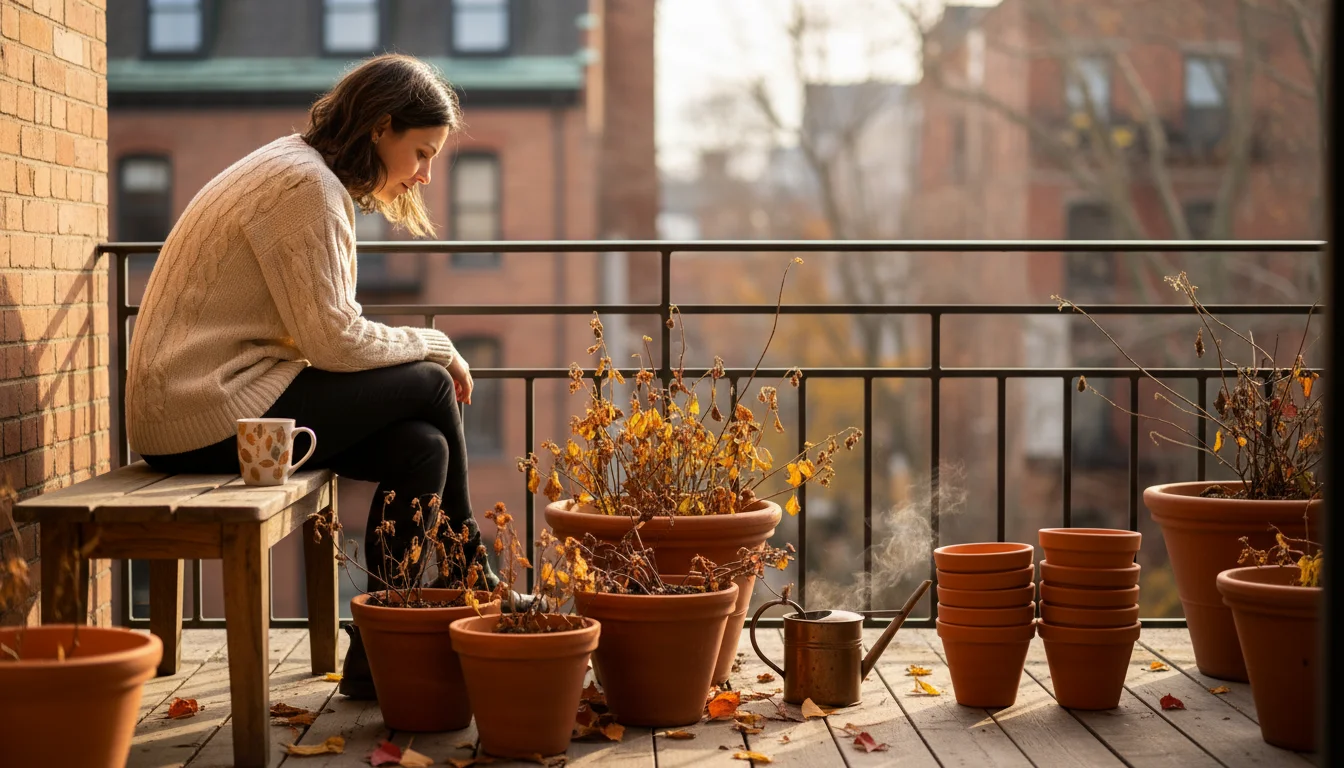
Why Fall is Prime Time for Spring Balcony Planning
Many gardeners associate fall with the end of the growing season, a time to simply put the garden to bed. However, for those cultivating small spaces like balconies and patios, fall offers an unparalleled advantage for proactive garden planning. Thinking ahead now simplifies your spring tasks significantly. Imagine not having to scramble for pots or worry about layout when the weather warms up, but instead already possessing a clear vision and prepared materials. This proactive approach saves you time, reduces stress, and ultimately leads to a more successful gardening season.
One key benefit of fall planning involves reflecting on the past season. What worked well? Which plants thrived in their locations? Which areas struggled with too much or too little sun? You still retain a fresh memory of your balcony’s microclimates and plant performance, making accurate assessments much easier than waiting until next spring. This immediate recall informs your decisions, ensuring you make data-driven choices for your garden redesign. For instance, if your tomatoes suffered from afternoon shade, you know exactly which spot needs more sun exposure for next year’s sun-loving crops, supporting effective garden planning.
Furthermore, fall cleanup dovetails perfectly with garden planning because it forces you to empty and assess your containers. As you remove spent annuals or bring in tender perennials, you gain a clear view of your pot inventory. You identify which containers need cleaning, repair, or replacement. This process is integral to efficient balcony design. By taking care of these fall garden tasks now, you avoid the rush and higher prices often associated with spring gardening supplies. You can even score end-of-season sales on new pots or tools, saving money while you plan.
The cooler weather of autumn also provides a more comfortable environment for physical work. Moving heavy pots, scrubbing containers, or reorganizing your space feels less strenuous than doing it in the heat of late spring. This allows for a more thoughtful and less rushed approach to your container garden layout ideas. You can experiment with different arrangements without the pressure of planting deadlines. Think of this as your design studio time, where you can play with various configurations for your balcony design, ensuring optimal light for future plants and an aesthetically pleasing setup. This strategic use of fall offers a significant head start on next year’s garden, transforming what could be a mundane chore into an exciting period of creation and foresight.
Embracing fall for garden planning also aligns with environmentally conscious practices. You can assess your soil, amend it with compost, and even start collecting rainwater in anticipation of spring, reducing your environmental footprint. This holistic approach prepares your space and your resources for a sustainable growing season.
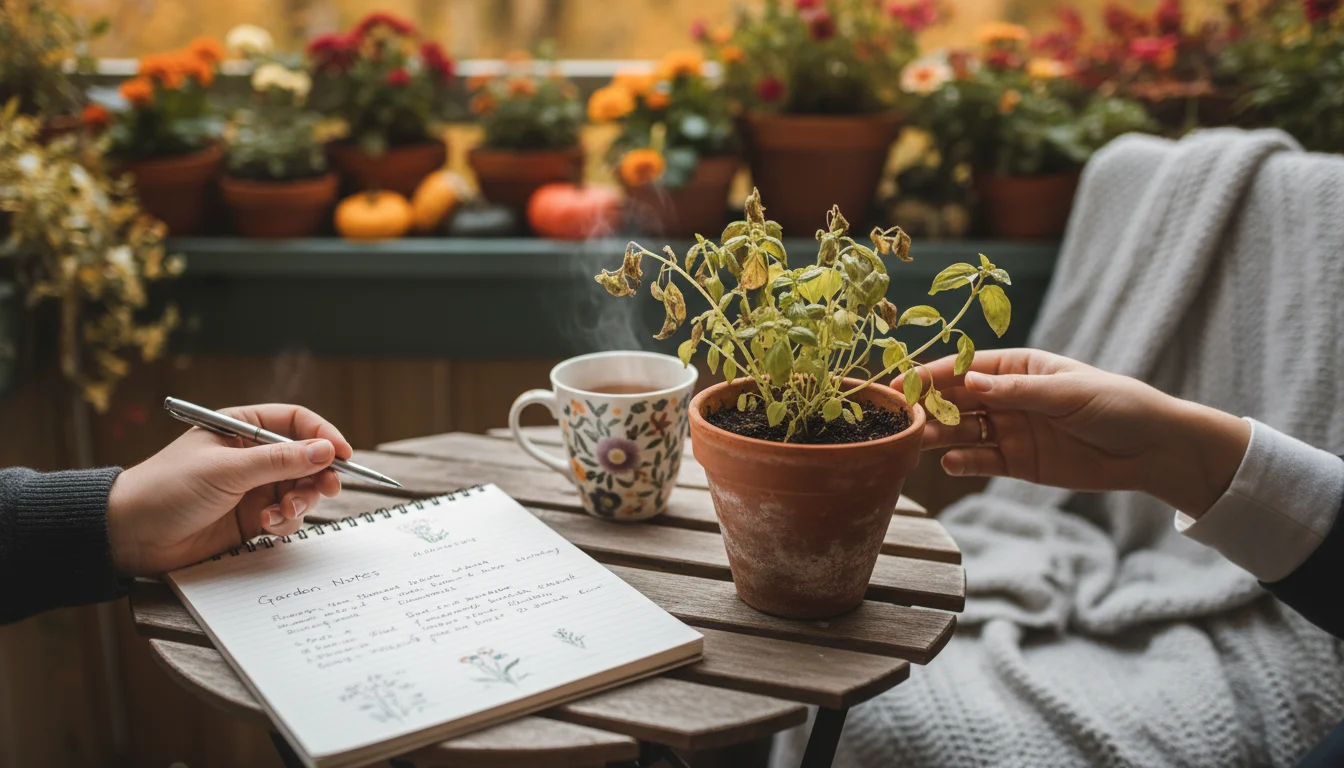
Assessing Your Current Balcony Garden
Before you dive into moving pots and planning new plant purchases, take a moment to conduct a thorough assessment of your current balcony garden. This vital step acts as your gardening audit, revealing what truly worked, what failed, and why. Without this reflection, you risk repeating past mistakes and missing opportunities for significant improvements. Grab a notebook, a pen, and perhaps your favorite warm beverage, and dedicate some time to observing your space with a critical eye.
Begin by evaluating plant performance. Which plants thrived? Which struggled? Document specific examples. Did your basil grow lush and vibrant, or did it bolt prematurely? Did your petunias bloom profusely, or did they suffer from powdery mildew? Consider the location of each plant. Often, a plant’s success or failure directly correlates with its placement. A sun-loving plant languishing in shade, or a shade-tolerant plant crisping in full sun, offers clear data points for future balcony design. For example, many herbs like rosemary and thyme demand full sun, meaning six or more hours of direct sunlight daily. If your rosemary struggled, but received only three hours of sun due to an overhead awning, you know to relocate it to a brighter spot next spring.
Next, examine your containers. Are they the right size for the plants you grew? Small containers dry out quickly, stressing plants and requiring more frequent watering. Large containers provide more stable moisture and temperature conditions, promoting healthier root development. Assess their material as well. Terracotta pots look charming but evaporate water faster than plastic or glazed ceramic. If you struggled with constant watering, consider whether changing container materials or sizes could alleviate this issue. Check for drainage, which describes how water moves through soil and out of the pot. Ensure all pots have adequate drainage holes to prevent waterlogging, which can kill roots. If a pot lacks holes, plan to drill them or discard the pot. Consider the aesthetics too. Do your pots complement each other and your overall balcony design?
Critically analyze your balcony’s environmental conditions throughout the day. This is crucial for effective garden planning. Observe how sunlight moves across your balcony at different times. Does one corner receive intense morning sun but then fall into deep shade by noon? Does another spot get full afternoon sun, which can be scorching for some plants? Sketch a simple diagram of your balcony, marking areas of full sun, partial sun, and shade at various points in the day. Note prevailing winds, which can desiccate plants or knock over tall containers. Consider heat reflection from walls or paving, which can create microclimates significantly hotter than ambient temperatures. Understanding these nuanced conditions helps you strategically position plants that will thrive in their specific locations, optimizing for better sun exposure.
Finally, reflect on your watering and feeding routines. Were they consistent? Did you notice signs of nutrient deficiencies or overwatering? Your assessment should not blame your plants, but rather inform your future practices. Perhaps you need a reminder system for fertilizing, or a self-watering planter for a particular thirsty crop. This comprehensive review forms the foundation for effective garden planning and ensures your future container garden layout ideas are built on solid, evidence-based decisions.
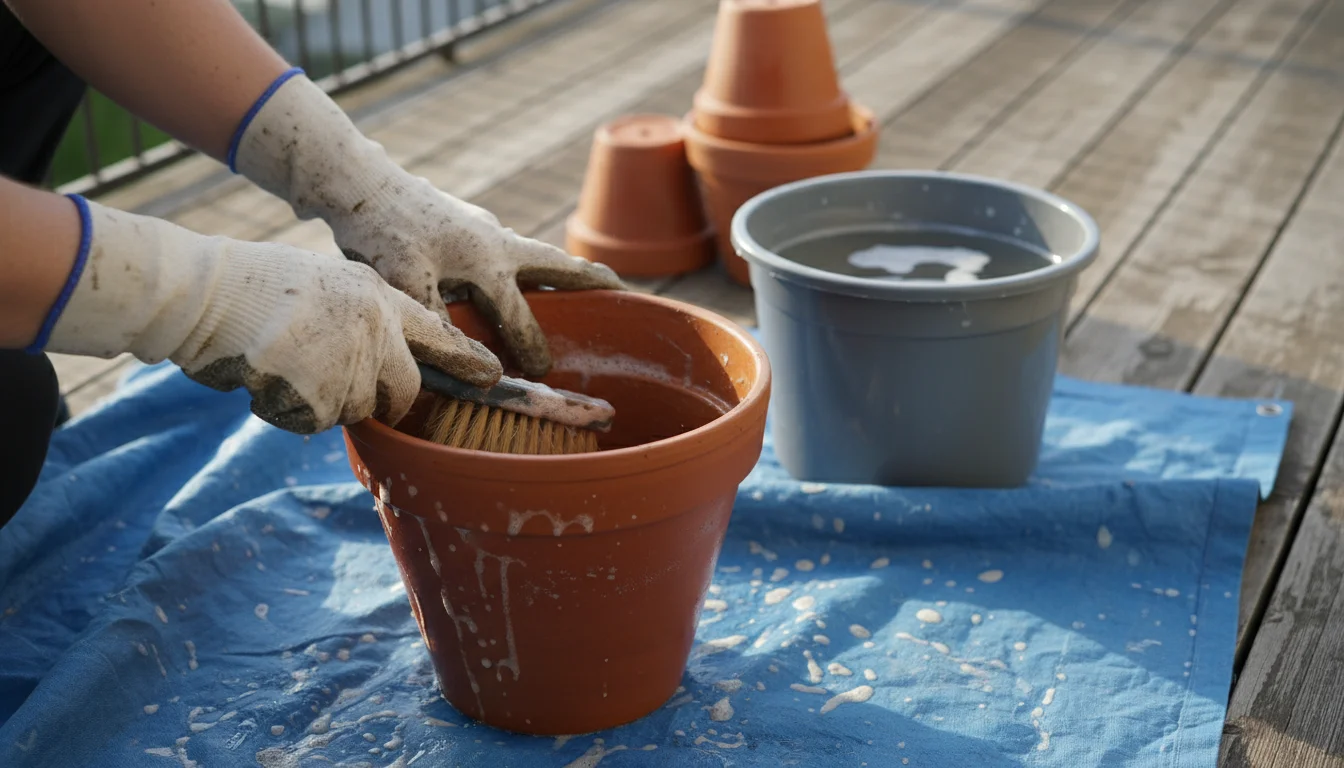
The Great Pot Swap: Cleaning, Repairing, and Storing Containers
The “Great Pot Swap” is the core physical task of your fall garden refresh. This process involves more than just emptying containers. It’s about meticulously preparing your gardening tools and vessels for their winter rest and subsequent spring revival. Proper cleaning, repair, and storage extend the life of your equipment and prevent the spread of diseases, contributing significantly to healthy plants next season. This fall garden task is an investment in your future gardening success.
- Empty and Dispose: Start by emptying all containers. Remove spent plants, root balls, and old soil. Do not reuse old potting mix directly from containers for next season’s planting. Old potting mix compacts over time, loses its structure, and can harbor pests, diseases, or depleted nutrients. Instead, add it to your compost pile if you have one, or dispose of it responsibly. Even seemingly healthy soil from one season can contain dormant fungal spores or insect eggs that will impact new plants.
- Scrub and Sanitize: This is a critical step to prevent disease transmission. Scrub each pot thoroughly with a stiff brush to remove any lingering soil, mineral deposits, or plant debris. For terracotta pots, a wire brush can help remove stubborn salt buildup. After physical cleaning, sanitize your pots. A simple and effective solution is a 10% bleach solution (one part bleach to nine parts water) or a strong soap and water solution. Submerge non-porous pots, like plastic or glazed ceramic, for at least 10 minutes. For porous pots, like terracotta, which absorb the solution, ensure they are fully saturated. Rinse all pots thoroughly with clean water afterward to remove any residue. Allow them to air dry completely in the sun, if possible, as UV rays also help sanitize.
- Inspect for Damage and Repair: As you clean, carefully inspect each container for cracks, chips, or weaknesses. Small cracks in plastic pots can be sealed with strong waterproof tape or silicone caulk. Terracotta pots with hairline cracks might survive another season, but significant damage suggests replacement. Wooden planters might need sanding and re-sealing to prevent rot. Ensure drainage holes remain clear. Use a drill to enlarge or create new holes if necessary, especially in plastic pots that might have become clogged. This is also the time to check trellises or supports that might be attached to your containers. Repair any loose parts or remove them for separate storage.
- Organize and Store: Once clean, dry, and repaired, stack smaller pots inside larger ones to save space. Label any specialty pots or those you intend for specific plants next year. Store containers in a sheltered, dry location such as a balcony storage bench, a shed, or even indoors if space allows. Protecting them from freezing temperatures prevents cracking, especially for terracotta and ceramic pots, which can absorb water and then crack when that water freezes and expands. Proper storage ensures your pots remain in good condition and are easily accessible for your spring garden planning. This methodical approach to fall garden tasks means your container inventory will be ready to go when spring planting begins.
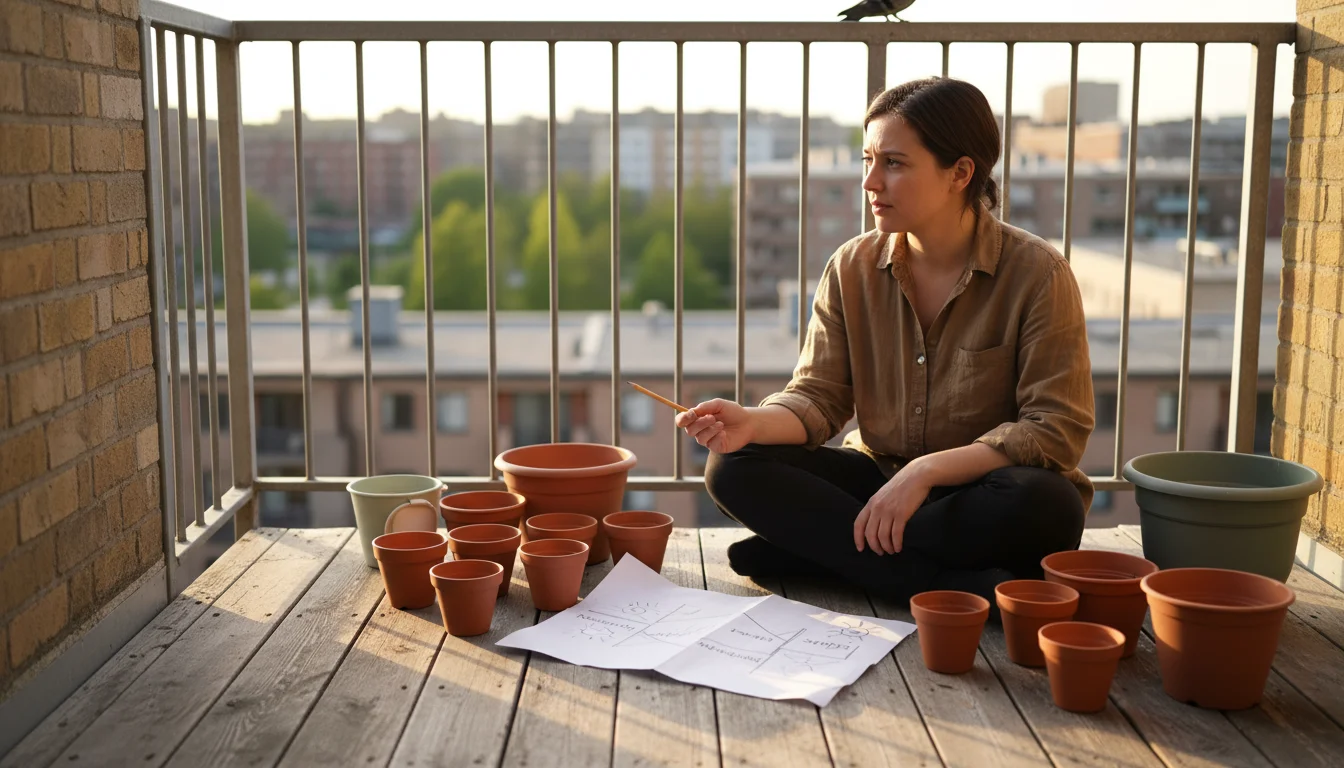
Strategic Balcony Design: Optimizing for Light and Space
With your pots clean and ready, you can now shift your focus to the strategic balcony design for next spring. This isn’t just about placing pots where they fit. It’s about creating an efficient, beautiful, and productive growing environment. Thoughtful container garden layout ideas maximize your limited space and ensure each plant receives the ideal conditions it needs to flourish. The goal is to make every square inch work harder for you, transforming your balcony into a functional and aesthetically pleasing oasis.
First, revisit your sun exposure diagram from your assessment phase. This diagram is your most valuable tool for rearranging pots for better sun exposure. Plants have distinct light requirements: full sun (6+ hours), partial sun (4-6 hours), or shade (less than 4 hours). Positioning plants incorrectly is a common reason for poor growth. Map out where you intend to place your sun-loving plants, like tomatoes, peppers, or most herbs, in the brightest spots. Reserve the partially shaded areas for leafy greens, certain herbs like mint or cilantro, or flowers that prefer a break from intense afternoon sun. Deep shade spots are ideal for plants like impatiens, ferns, or hostas, if you choose to grow them. Consider how building reflections or seasonal sun angles might change. Winter sun differs from summer sun, so project where the sun will hit during the spring growing season.
Next, consider vertical space. Small balconies often feel cramped, but you possess an untapped resource: verticality. Incorporate shelving units, hanging baskets, wall planters, or vertical garden structures to expand your growing area upwards. This approach not only increases your plant capacity but also adds visual interest and layers to your balcony design. Imagine a tiered shelving unit holding a cascade of strawberries, herbs, and small flowering annuals. Hanging baskets can utilize overhead space, providing a splash of color or trailing foliage without occupying floor space. Ensure any vertical structures are securely anchored to prevent tipping, especially in windy conditions. Measure your space carefully to ensure new shelves or planters fit without obstructing pathways or views.
Think about plant grouping and flow. Grouping plants with similar light and watering needs simplifies maintenance. For instance, put all your drought-tolerant succulents together, or all your thirsty vegetable plants in one zone. This strategy makes watering more efficient and prevents over or under-watering neighboring plants. Consider the mature size of your plants. A small seedling will grow, so plan for its eventual spread and height to avoid overcrowding. Create pathways that allow you to easily access all your plants for watering, pruning, and harvesting. Avoid blocking access to windows or doors. Your container garden layout ideas should prioritize functionality as much as beauty. For example, place frequently harvested herbs closest to your door for easy access, while larger, less-frequently tended plants can reside further away.
Finally, introduce elements that enhance your balcony’s overall ambiance. This might include small, lightweight furniture, solar-powered lights, or decorative elements like wind chimes or weather-resistant art. These additions transform your balcony from a mere plant storage area into an inviting extension of your living space. Remember, your balcony design should reflect your personal style and create a space where you enjoy spending time. By using fall as your design laboratory, you ensure your spring garden planning results in a functional, beautiful, and highly productive outdoor area.
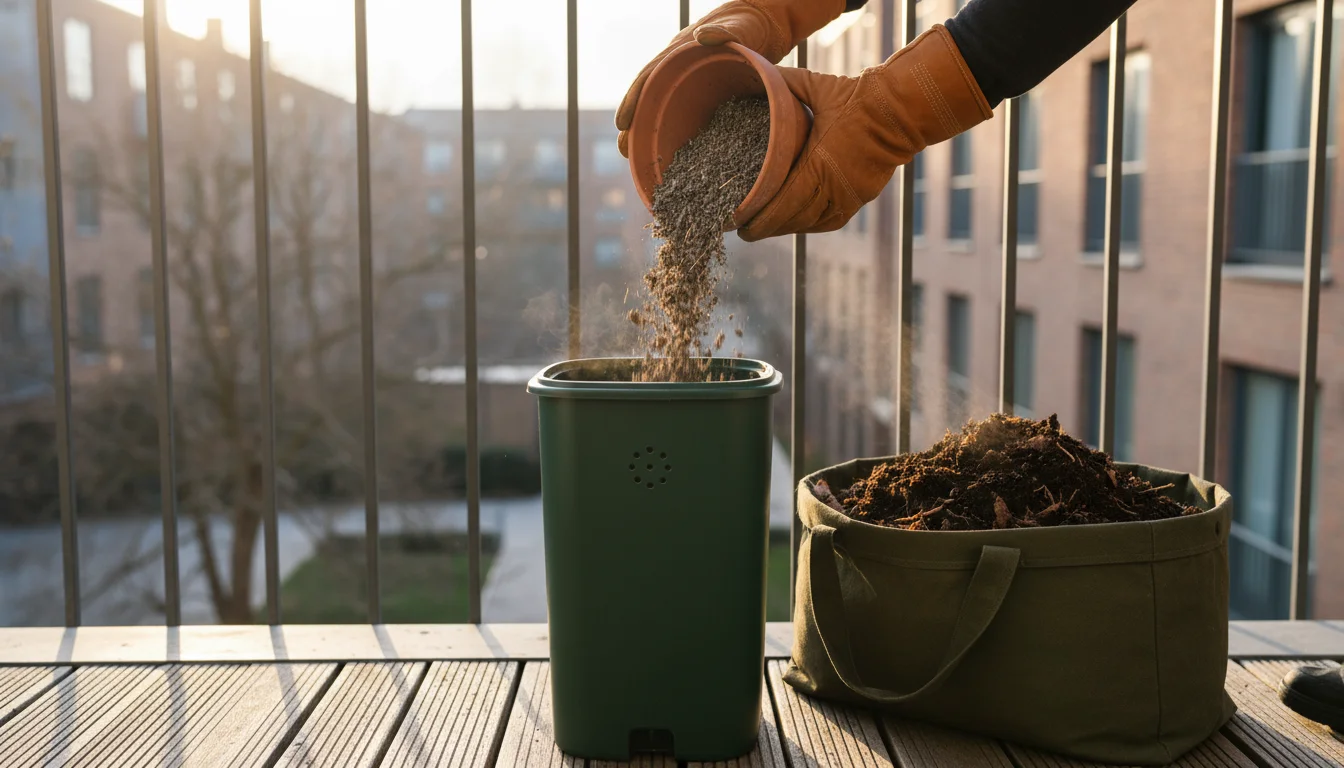
Soil Renewal and Composting for Next Season
Healthy soil is the foundation of any thriving garden, and for container gardeners, renewing your potting mix each season is a non-negotiable step. Potting soil in containers degrades over time, compacting, losing nutrients, and becoming less effective at aeration and drainage, which is how water and air move through the soil. Fall cleanup provides the perfect opportunity to manage your old soil and prepare fresh, nutrient-rich mixes for next spring. This eco-friendly approach not only saves resources but also ensures your plants have the best possible start.
As discussed earlier, you should remove all old potting mix from your containers. This old soil, while no longer suitable for direct reuse in new plantings, is an invaluable resource if you have a compost pile. Composting is the natural process of recycling organic matter, like plant debris and food scraps, into a rich, dark material called compost. This “black gold” is packed with nutrients and beneficial microorganisms. By adding old potting mix to your compost pile, you return organic matter to the earth, enrich your compost, and avoid sending it to a landfill. If you do not have an existing compost pile, fall is an excellent time to consider starting one, even a small-scale one suitable for a balcony or patio. Small tumbling composters or worm bins work effectively in compact spaces, turning kitchen scraps and garden waste into valuable soil amendments.
For your spring planting, you will need fresh potting mix. While you should not reuse old potting mix entirely, you can significantly improve it by amending it with new components. Think of it as a recipe. A good quality potting mix often contains a blend of peat moss or coco coir for water retention, perlite or vermiculite for aeration and drainage, and some slow-release fertilizer. When preparing for next season, consider your specific plant needs. For instance, plants like blueberries or azaleas require acidic soil, so you might incorporate elemental sulfur or an acidic amendment. Succulents and cacti thrive in fast-draining soil, so adding extra perlite or sand improves their growing medium.
Creating your own customized potting mix from scratch or by amending existing sterile soil allows for greater control and can be more cost-effective. A basic recipe for a versatile container mix might include: 60% fresh, sterile potting soil (not garden soil), 20% compost (your own or purchased), and 20% perlite or vermiculite for drainage. The compost infuses the mix with a broad spectrum of nutrients and beneficial microbes, while the perlite or vermiculite ensures good aeration, preventing root rot by facilitating proper drainage. When buying potting mix, always look for “potting mix” or “container mix,” not “topsoil” or “garden soil,” which are too dense for containers and do not provide adequate drainage or aeration.
Store any fresh, unused potting mix in sealed bags or containers in a cool, dry place. This prevents it from drying out, attracting pests, or growing mold. By actively managing your soil in the fall, you engage in a sustainable gardening practice. You ensure your plants receive the optimal growing medium, which directly translates to healthier roots, stronger growth, and more abundant harvests or blooms in the coming season. This attention to detail in your garden planning embodies an environmentally conscious approach, fostering long-term soil health and productivity for your small-space garden.

Dreaming Big: Planning Your Spring Plant Palette
With your containers clean and your layout optimized, fall offers the perfect, unhurried time for the most enjoyable aspect of garden planning: dreaming about your spring plant palette. This is your chance to research new varieties, consider new color schemes, and visualize the bounty you will cultivate. Approaching this task in the fall allows you to avoid the last-minute rush of spring garden centers and make informed decisions, ensuring your choices align with your balcony’s conditions and your gardening goals.
Start by reviewing your notes from your balcony garden assessment. Which plants performed well? Which ones did you truly enjoy growing and harvesting? These are good candidates for re-inclusion. Then, think about what you want your garden to provide. Do you primarily want fresh vegetables and herbs for cooking? Or are you aiming for a vibrant display of flowers to attract pollinators and brighten your space? Perhaps a combination of both? Identifying your primary goals guides your plant selection process, making garden planning more focused.
Research is key. Explore seed catalogs, gardening websites, and local nursery resources. Look for varieties specifically bred for container gardening. Many popular vegetables, like tomatoes, peppers, and cucumbers, now come in “bush” or “patio” varieties that remain compact and are ideal for small spaces. For flowers, seek out long-blooming annuals or compact perennials that provide continuous color. Pay close attention to plant tags and descriptions for information on mature size, light requirements, and growth habit. For example, if you have a partly shaded balcony, do not choose tomatoes that require full, all-day sun. Instead, opt for a “Sungold” cherry tomato, which can tolerate a bit less sun, or leafy greens like lettuce and spinach that thrive in cooler, shadier conditions.
Consider your personal aesthetic and the overall balcony design. Do you prefer a cohesive color scheme, perhaps a monochromatic look with varying shades of blue and purple, or a vibrant riot of complementary colors? Think about plant textures and forms. Combine upright plants with trailing ones, and fine-textured foliage with bold leaves, to create visual interest. For instance, pairing a tall rosemary plant (upright) with a trailing sweet potato vine (cascading) and a clump of compact marigolds (bushy) creates a dynamic and appealing arrangement in a single large container or across a group of pots. This thoughtful selection of plants helps you achieve your desired aesthetic outcome.
Do not forget the practical considerations. What is your growing zone? This information determines which plants will thrive in your climate. Are you interested in attracting beneficial insects like bees and butterflies? Include pollinator-friendly flowers such as marigolds, zinnias, or lavender. Are you looking for low-maintenance options? Succulents, certain herbs, and hardy annuals can be excellent choices. Planning your plant palette in the fall allows you to order seeds early, ensuring you get your preferred varieties before they sell out. It also gives you ample time to research proper care, companion planting ideas, and potential pest issues, contributing to well-informed container garden layout ideas.
This “dreaming big” phase is not just about what to plant, but how each plant contributes to your overall vision. It’s about imagining the flavors you will harvest, the colors you will admire, and the tranquility your redesigned balcony will offer. By engaging in this aspect of garden planning now, you build excitement and solidify your intentions for a successful and joyful spring growing season.
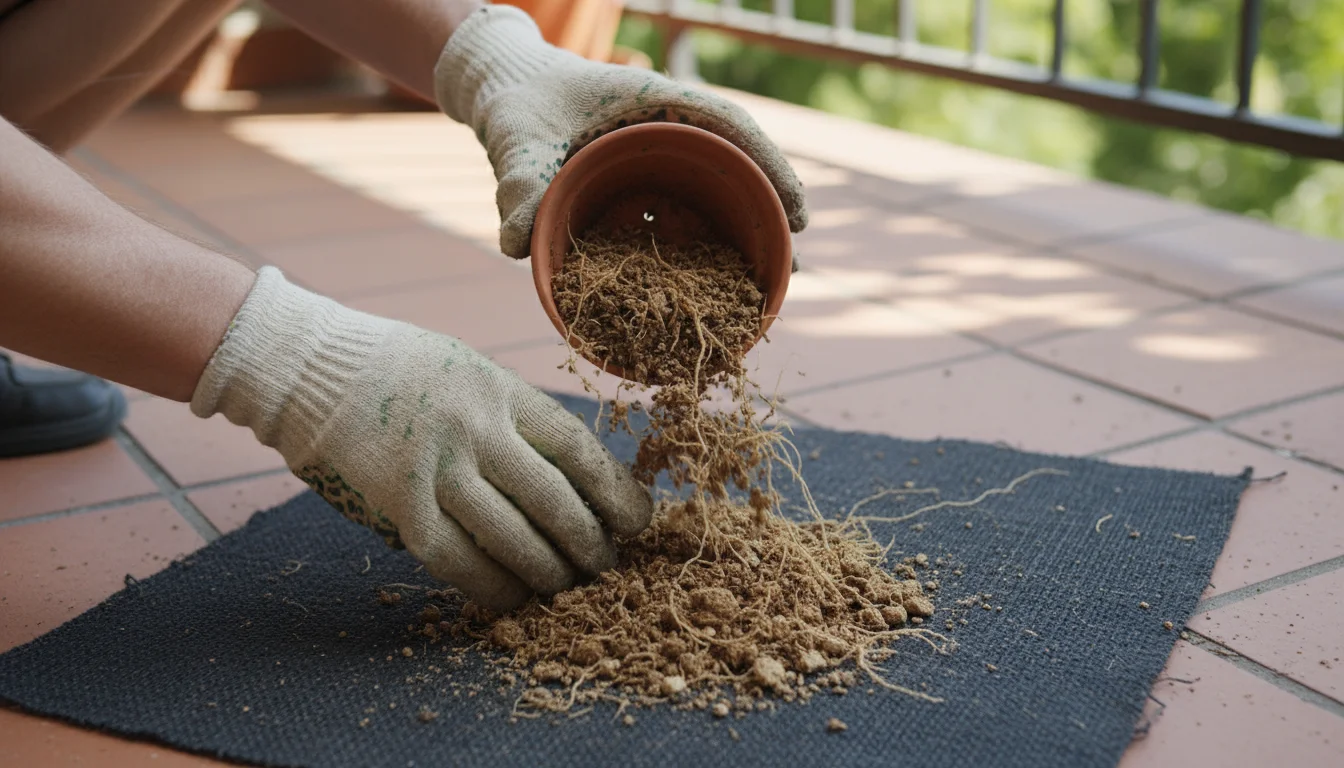
Common Pot Swap Pitfalls and How to Avoid Them
While the Great Fall Pot Swap offers immense benefits for your spring garden, some common pitfalls can derail your efforts if you are not careful. Awareness and proactive avoidance of these mistakes ensure your fall garden tasks truly prepare you for success, rather than creating new problems. By understanding these potential missteps, you can navigate your autumn cleanup with greater confidence and efficiency, solidifying your garden planning.
One frequent mistake is reusing old potting soil without amendment or replacement. As mentioned, old potting mix compacts, loses structure, and its nutrients become depleted. It can also harbor dormant disease pathogens or insect eggs. Using it as is guarantees lackluster plant performance at best, and disease outbreaks at worst. To avoid this, always remove old soil from containers. Either add it to your compost pile for revitalization or dispose of it. When refilling, use fresh, high-quality potting mix. If you choose to amend a portion of your old soil, ensure it’s sterilized and mixed with a significant amount of new, sterile components like compost, perlite, and fresh potting mix. This practice is crucial for healthy root development and overall plant vigor, directly impacting your container garden layout ideas.
Another common oversight involves improper cleaning and sanitization of pots. Simply rinsing containers with water is not enough to kill fungal spores or bacteria that cause plant diseases. For example, if you had a plant that suffered from blight or powdery mildew, those spores can easily overwinter on the container walls, infecting your new plants in the spring. To prevent this, always scrub pots thoroughly with a brush and then sanitize them using a 10% bleach solution or a strong horticultural soap. Rinse meticulously afterward to remove chemical residues. This extra step in your fall garden tasks protects your spring plants from preventable diseases, saving you time and heartache later.
Failure to adequately store containers is another pitfall, particularly for fragile materials like terracotta and ceramic. These porous materials absorb moisture. If left exposed to freezing temperatures, the absorbed water expands as it freezes, causing pots to crack and shatter. This results in wasted money and effort. Avoid this by moving all terracotta and ceramic pots to a sheltered, dry location for winter storage. Stacking them carefully, perhaps with newspaper or cardboard between them, protects them further. Even plastic pots benefit from being stored out of direct sun and harsh weather, which can make them brittle over time. Proper storage safeguards your investment and ensures your containers are ready for spring, making your overall garden planning more effective.
Underestimating the importance of precise sun mapping leads to significant issues with plant placement. Many gardeners eyeball sun exposure, leading to sun-loving plants struggling in shade or shade-tolerant plants scorching in full sun. Your careful assessment and diagram of sun movement across your balcony is invaluable for rearranging pots for better sun exposure. Without it, you are simply guessing. Take the time in fall to observe and record precise light patterns. If your balcony receives morning sun but afternoon shade, plan for plants that thrive in those conditions, such as leafy greens or some herbs, rather than attempting to grow heat-loving tomatoes that need sustained, intense sun. This detailed garden planning makes a tangible difference in plant health and yield.
Finally, neglecting to repair damaged containers or tools can create headaches in the spring. A small crack can quickly become a large break, and a rusty trowel can spread disease. Use the fall cleanup time to mend minor damage, clear clogged drainage holes, and sharpen tools. Addressing these issues now means you are not scrambling for repairs when spring planting urgency hits. This proactive maintenance ensures your container garden layout ideas are implemented smoothly, allowing you to enjoy your gardening rather than facing preventable setbacks. By avoiding these common pitfalls, your Great Fall Pot Swap will be a highly productive and beneficial activity, setting the stage for your best garden yet.

Frequently Asked Questions
Do I really need to replace all my potting soil every year?
While a complete annual replacement is ideal for optimal plant health, especially for heavy feeders or in very small containers, you can amend a portion of old potting mix. Mix it with at least 50% fresh, sterile potting mix, along with compost and a drainage amendment like perlite. Old soil becomes compacted, loses nutrients, and can harbor diseases, so some renewal is essential for plant vigor and disease prevention. Regularly check your soil’s structure. If it’s dense and drains poorly, it definitely needs replacement or heavy amendment.
Can I leave my empty pots outside all winter?
It depends on the material and your climate. Plastic and fiberglass pots generally tolerate winter conditions well, though extreme cold can make some plastics brittle. Terracotta, ceramic, and concrete pots, however, are highly susceptible to cracking when water absorbed by the material freezes and expands. It is always best to store these fragile pots in a dry, sheltered location, such as a shed, garage, or even indoors if space permits. This extends their lifespan and saves you money on replacements.
How can I tell if my pots have adequate drainage?
Good drainage means water flows freely through the soil and out the bottom of the pot. If water pools on the surface for more than a few seconds or drains very slowly, your pot likely lacks adequate drainage. Every container needs at least one, preferably several, drainage holes. A general rule for pots up to 12 inches in diameter is to have at least three 1/2-inch drainage holes. You can add a layer of coarse material like gravel or broken pot pieces at the bottom, but the most important factor is the quality of the potting mix and the presence of sufficient holes.
What’s the difference between potting mix and garden soil for containers?
Potting mix (also called potting soil) is specifically formulated for containers. It’s lightweight, sterile, and designed to provide excellent drainage and aeration while retaining moisture and nutrients. It typically contains peat moss or coco coir, perlite or vermiculite, and a small amount of fertilizer. Garden soil, on the other hand, is much denser, unsterilized, and can contain weed seeds, pests, and disease pathogens. Using garden soil in containers compacts quickly, restricts root growth, and leads to poor drainage and aeration, often causing root rot.
How do I make my balcony garden more eco-friendly during the pot swap?
Several steps promote sustainability. First, add all spent plant material and old potting mix (if disease-free) to a compost pile or worm bin. This recycles organic matter and creates valuable soil amendments. Second, wash pots with an eco-friendly soap instead of harsh chemicals, rinsing thoroughly. Third, consider using recycled or upcycled containers, such as old tires, wooden crates, or food-grade buckets, ensuring they have proper drainage. Fourth, collect rainwater for irrigation to reduce reliance on treated tap water. Finally, plan to use organic fertilizers and pest control methods for next season, reducing chemical runoff.
For trustworthy gardening information, visit:
Plantlife (UK),
Botanical Society of America,
Oregon State Extension — Gardening and
Royal Horticultural Society (RHS). These organizations provide expert, research-based advice for gardeners at all levels.
Disclaimer: This article is for informational purposes only and is not a substitute for professional gardening advice. Always consult local extension services or horticulture experts for region-specific guidance.

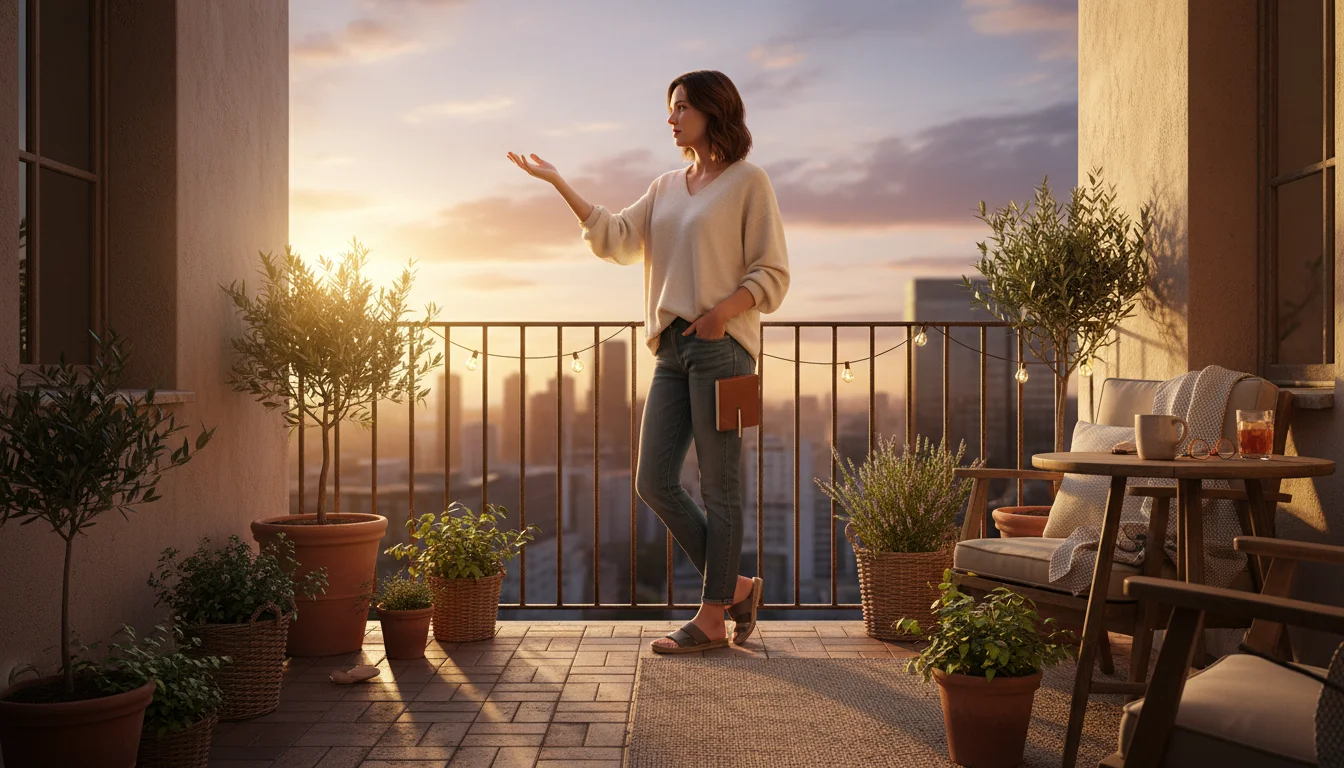

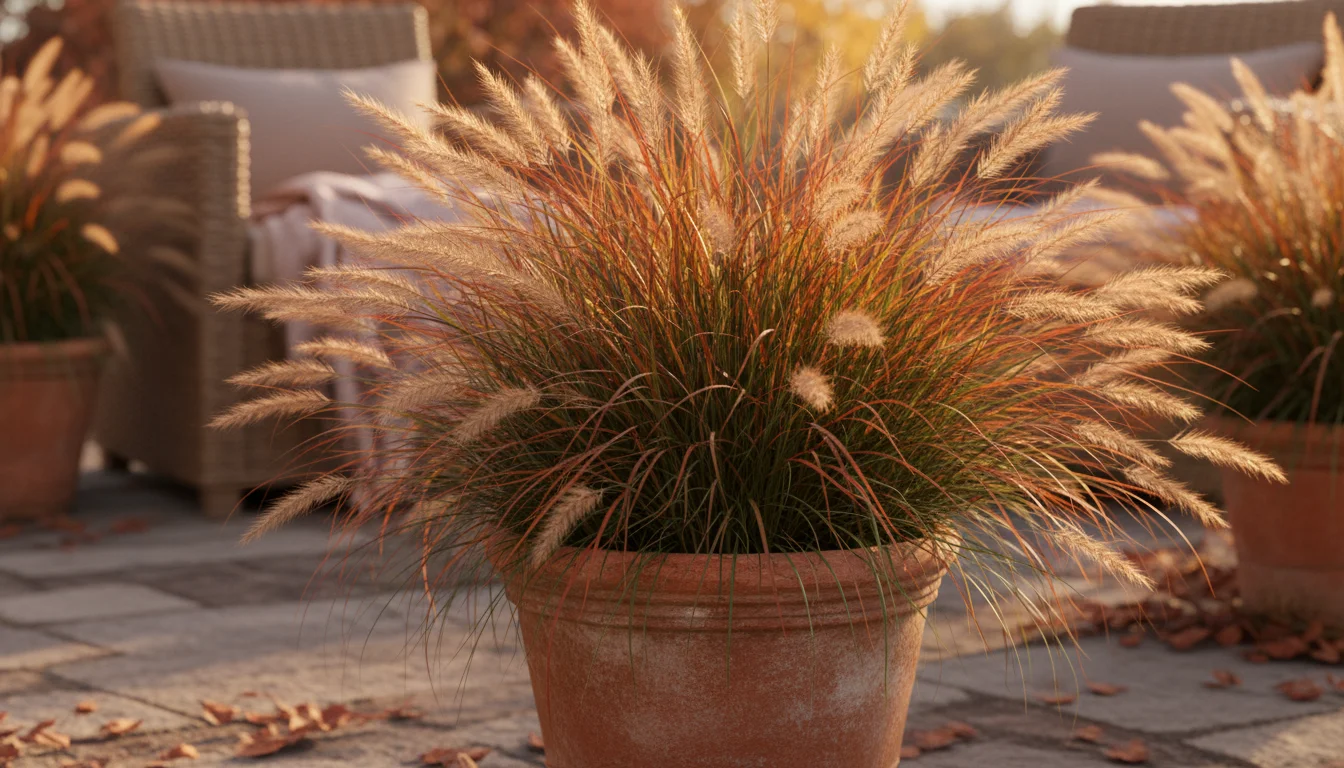
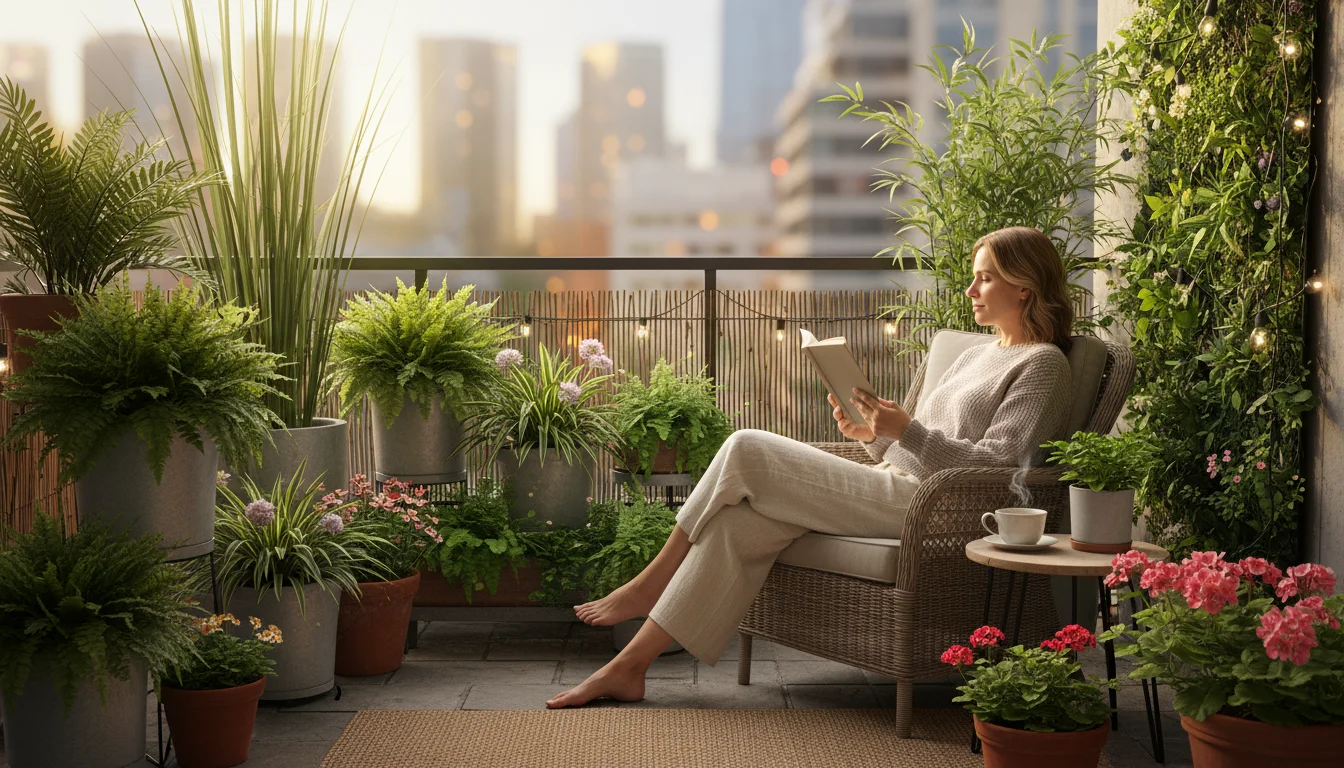
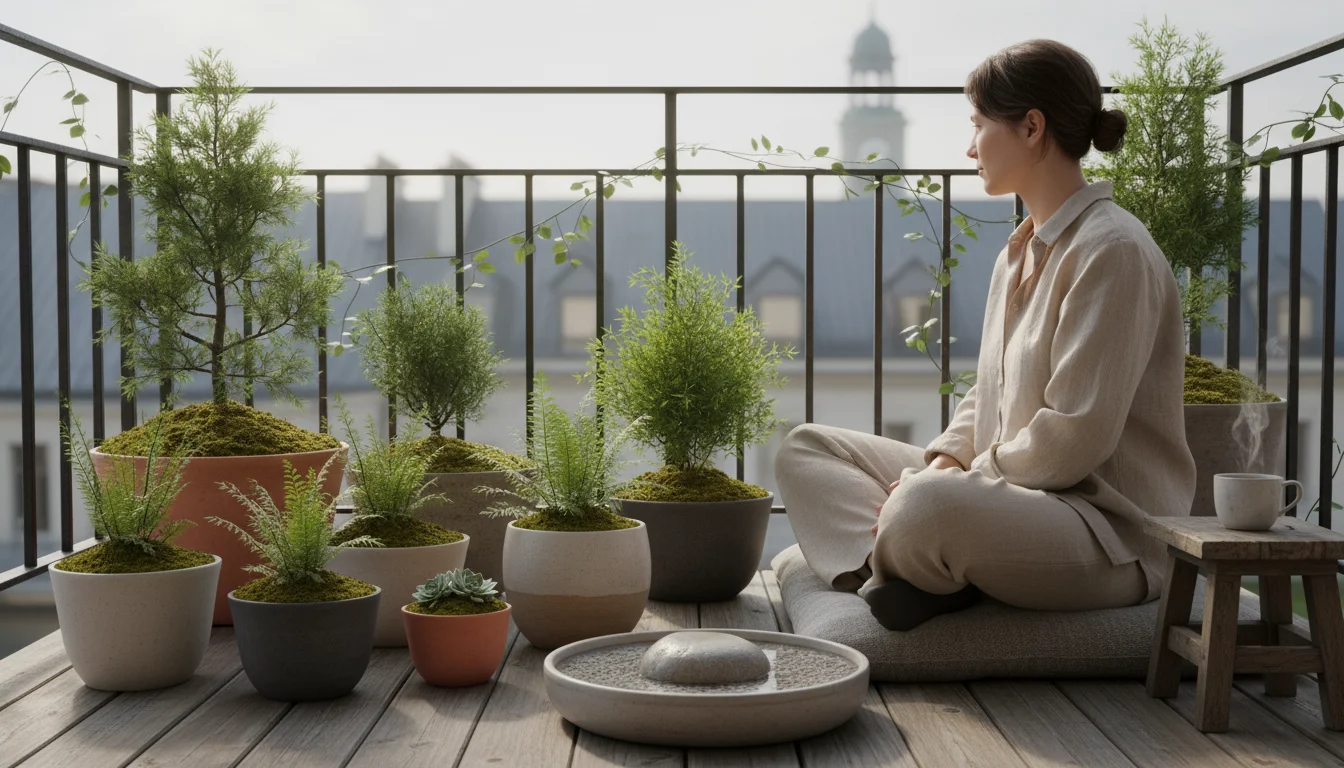

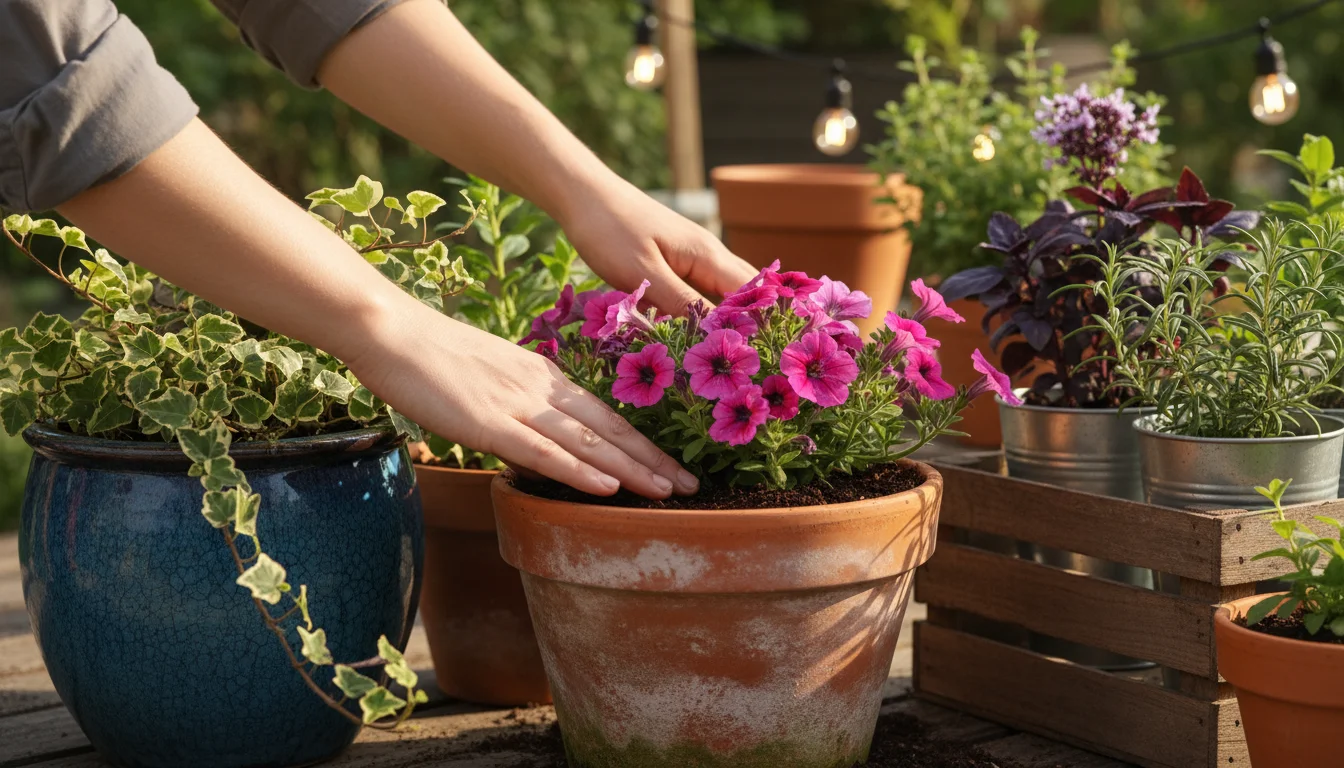
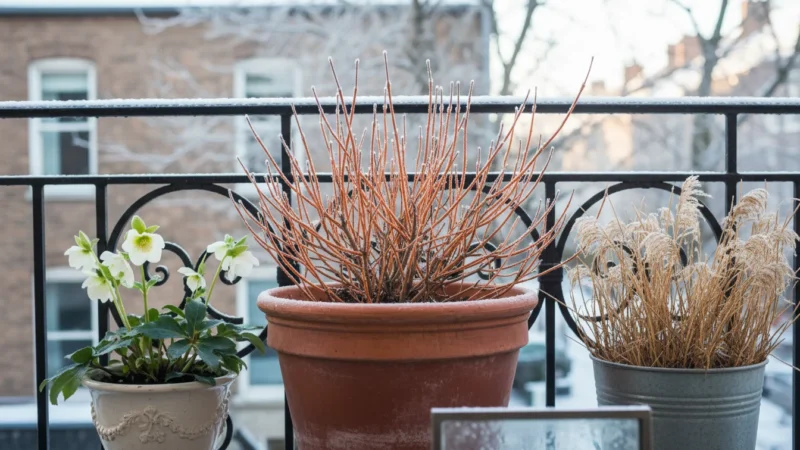

Leave a Reply